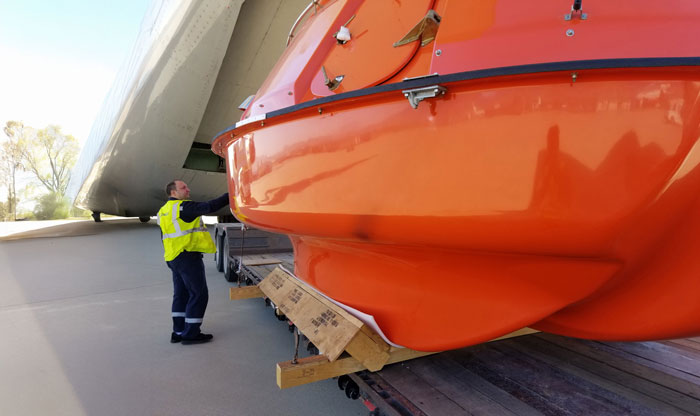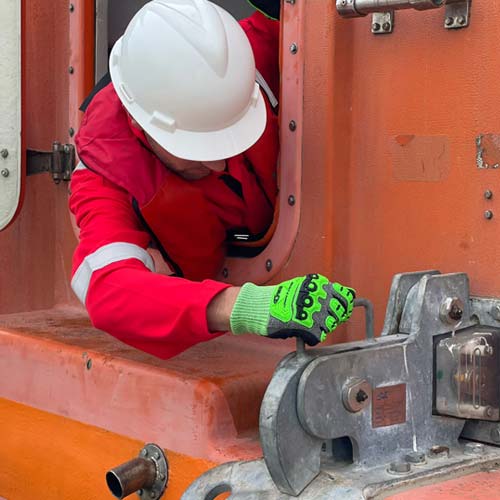Proper lifeboat maintenance is a legal and moral imperative for all UK vessel operators. This guide outlines key regulations, inspection protocols, and best practices to ensure lifeboats are always ready for emergency deployment, safeguarding lives at sea.

Understanding the Regulatory Framework Governing Lifeboat Readiness
International Regulations
- SOLAS Chapter III: Defines essential carriage and maintenance standards for lifesaving appliances.
- IMO MSC.402(96): Mandates performance standards and maintenance schedules for lifeboats and release gear.
- Recent 2022 Amendments: Introduce better ventilation for enclosed lifeboats and stricter certification for servicing.
UK-Specific Regulations
- MCA MGN 560 (M) Amendment 2: Provides UK-tailored inspection and maintenance protocols.
- Certified Personnel: Only authorised service providers or certified personnel can conduct inspections.
- Documentation: Strict recording and certification requirements, especially after load tests or repairs.

Robust Inspection and Maintenance Protocols for Lifeboat Systems
• Weekly Checks
Start lifeboat engines, conduct visual inspections of hull and components, and log all findings in the Safety Management System (SMS).
• Monthly Checks
Test release gear operation, engine start-up, and verify inventory completeness, maintaining detailed logs.
• Annual Inspections
Certified personnel perform full structural, engine, hydraulic, and safety equipment assessments, including operational load simulations.
• Five-Year Overhaul
Conduct load tests at 1.1× lifeboat weight, inspect davits and mechanisms thoroughly, and replace critical components as necessary.

Prioritising Safety: Mitigating Risks Associated with Lifeboat Operations
• Known Risk Areas
Accidents often occur due to improper release mechanisms during lifeboat drills.
• Recommended Safeguards
Use hanging-off pennants and fail-safe locking systems to prevent accidental releases.
• Training Importance
Regular crew drills with simulated or shore-based setups reduce operational hazards significantly.

Emerging Trends and Future Developments in Lifeboat Readiness
• 2031 IMO Amendments
Mandatory annual simulated testing of free-fall release systems to enhance safety compliance.
• Technological Advances
Smart sensors and IoT diagnostics enable real-time monitoring of lifeboat functions.
• Digitalisation
Cloud-based maintenance logs and electronic checklists improve transparency and audit readiness.

Best Practices for Maintaining Compliance and Lifeboat Safety
• Use MCA-Authorised Providers
Ensure all inspections and servicing comply with UK regulations through certified companies.
• Internal Audits
Conduct six-monthly reviews of SMS compliance to identify and address gaps proactively.
• Digital Maintenance Systems
Implement software platforms for tracking, reminders, and digital record-keeping to prevent missed checks.
• Crew Training
Provide certified training modules for lifeboat operation and inspection to all relevant staff.

Case Studies and Lessons from Lifeboat Incident Investigations
• Release Mechanism Failures
MAIB reports highlight common failures causing accidents during drills.
• Mandatory Retrofit
Incidents have prompted retrofitting of safer release and locking systems across fleets.
• Training and Procedures
Lessons stress essential procedural discipline and the use of third-party verification to reduce risk.

Concerns about your lifeboat readiness? Get in touch today?
Conclusion: Lifeboat Readiness as a Lifesaving Priority
Ensuring lifeboat operational readiness is both a legal mandate and a crucial safety measure. UK Marine Superintendents and Vessel Operators must maintain up-to-date knowledge of evolving requirements and implement rigorous inspection and maintenance regimes.
By embracing technology and fostering a culture focused on safety and accountability, operators can protect lives and meet compliance with confidence.
The integration of digital tools, certified training, and learning from past incidents forms the foundation for continuous improvement in lifeboat management. This proactive approach ensures comprehensive preparedness for emergencies at sea.
